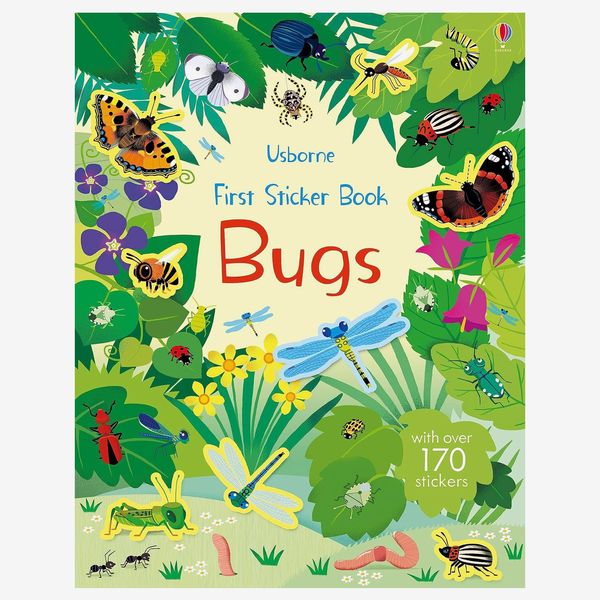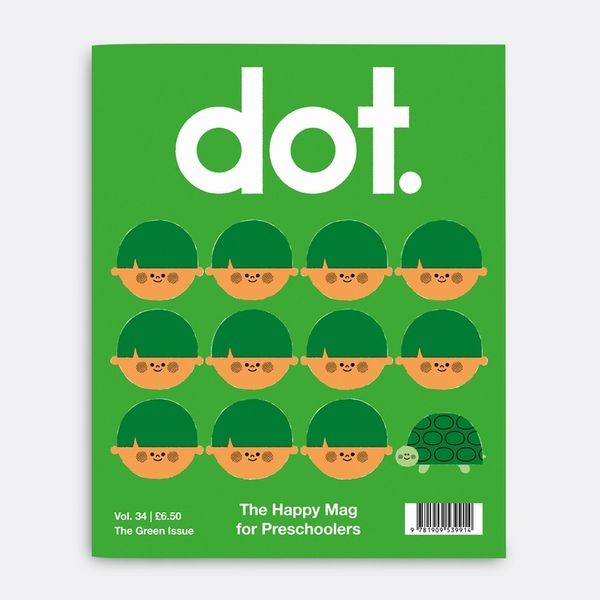
On my many outings to the bookstore over the years, I’ve wondered why the quality of children’s activity books seems to be on the decline. You’ve probably come across the type of activity book I’m talking about: a collection of 150 mazes on newsprintlike paper, 200 pages of “hidden objects,” pseudo-educational activities that encourage your kids to color or sticker by number. You aspirationally bring them on a road trip, hoping they’ll occupy your kids, but after one or two pages they get frustrated and bored. A few years later, you clean out the bookshelf, and these books make their way to the giveaway pile.
After numerous attempts trying out the aforementioned activity books with my kids, now 6 and 8, I made it my personal mission to seek out some activity books that (1) they found fun and (2) could genuinely hold their attention. I’ve spent years working in children’s media — making educational apps at Tinybop, leading the team behind the New York Times’ “Parenting” section, and recommending kids’ books on @kidsbookrecs — and felt confident that quality options are out there, and that I could find them.
Based on my own experience and how my kids have responded to what I found, what sets the really good activity books apart are illustration style and the variety and quality of the activities. Many of the best ones are made by artists or based on beloved children’s books. A lot of them weave in storytelling, elevated illustration, and writing prompts or have kids help tell stories in fun ways versus just doing the same activity page after page.
Finding level-appropriate activity books is key. Coloring activities are great for younger children without the most refined motor skills. Matching and pattern games are great for kids who are a bit older. Wordplay and collaborative storytelling are more fun once kids can read and write. I suggest stockpiling some of these options and trying them out to see what your child likes and is ready for. We like to bring ours out the night before a flight or a road trip, when the novelty and excitement are high.
For toddlers
Hervé Tullet is a French artist and author who invites play and interactivity into the dozens of children’s books he’s written and illustrated, like Mix it Up (my kids’ favorite), Press Here, and Say Zoop. The pages of his books embrace color, big shapes, big messes, and having kids touch and tap, all techniques which translate to his activity books as well. Perfect for fans of the Press Here series, this book invites a kid to play on the page: Imagine how dots connect; become creatures, inventions, or patterns. There’s no right or wrong way to play with these activities, making it perfect for a younger audience.
Full of dozens of toddler-level mazes, building activities, games, drawing challenges, and simple mathematical concepts, this book brings the signature characters and illustration style of the beloved Japanese illustrator and author of Everyone Poops, My Friends, and Bus Stops into an activity book. First published in 2013, this activity book is available for resale on various sites.
[Editor’s note: This book is currently sold out everywhere, but we’ll keep an eye out and update this story when it comes back in stock.]
If coloring and drawing frustrates your little one, or if you just want to avoid the mess of crayons and markers, there are a variety of sticker-based activity books from National Geographic Kids that can speak to your kid’s interests and keep them occupied at the same time. They come in themes like Space, Cool Animals, and Dinos and have 1,000 full-color stickers that can be used in the activities as well as just for fun. This is also a book you can hang on to until your kid is able to read, and they can engage in the fun facts and word games then.
Usborne makes another great sticker-based series offering background scenes in themes like Nature, Farm, and Bugs. They come with hundreds of stickers that are labeled (great for teaching new words) and can be placed in the backdrops. My kids liked to act out scenes as they placed the stickers down on the page, like a tiny little puppet show.
If standard stickers are a source of frustration, this reusable sticker set could be a better option, especially for a long trip. It includes ten thematic scenes where kids can place over 100 reusable pet-shop-themed stickers and then move them around from scene to scene as they like.
We were given these Eric Carle–inspired coloring placemats for my daughter’s third birthday. It’s an ingenious invention that combines food, art, and creating a giant mess. She would color the placemat wildly, often drawing in her interpretation of what was for dinner, then would proceed to eat dinner on top of her artwork, which could be promptly discarded at the end.
For early readers (ages 4 to 6)
Offering simple, creative instructions — on how to place or move a crayon, for example — Tullet encourages kids to create eye-catching, fantastical foods, like Zigzag Soup, Triangle Cake, and Crayon Puff Pastry. Pre- or early readers will get the most of this one, or a parent can read the “recipes” aloud.
This is another ideal activity book for the younger set, and is based on author and illustrator Mo Willems’s beloved characters Elephant and Piggie. Kids make some art — portraits, sculptures, collages, puzzles — that will be part of the “Museum of Wonderfully Interesting Life Like Excellent Museum Stuff!” You can let Elephant and Piggie be the conduit for encouraging your kids to put all their feelings on the page, and this 144-page book will keep them busy making for quite a while.
British illustrator and artist Marion Deuchars, whose children’s books are heavily inspired by the art world, offers a handful of fun activity books that weave in stories about recognizable famous artists, like Yayoi Kusama, Henri Matisse, and Pablo Picasso. She challenges kids to “draw Mona Lisa’s smile,” for instance, and color a bouquet of sunflowers inspired by Vincent van Gogh. Parents can give younger kids guidance, or older kids can take these challenges into their own hands.
Ed Emberley, the nonagenarian illustrator and children’s-book author of Go Away, Big Green Monster! fame, has created a delightful collection of drawing books for children. They guide kids to design animals, monsters, “weirdos,” and everyday objects by breaking them down into their discrete shapes and textures. At the age when kids are starting to figure out how to create shapes, texture, and dimension, Emberley takes the intimidation out of drawing and makes it approachable, playful, and silly.
For readers and writers (kindergarten and up)
This is the ultimate imagination variety pack, created by Mike Lowery, whose books for kids, like Everything Awesome About Space and Everything Awesome About Sharks, pack mind-boggling information into comics, doodles, and adorable illustrations. There are dozens of prompts here for everything from creating a personalized spaceship to writing a song for a cat rock band, and the book comes with an abundance of use-as-you-wish stickers as well.
Lowery has also created a series of “Doodle Adventure” books that are part mad-libs, part choose-your-own-adventure, and part activity book, where the kid fills in the details and helps tell the story. They feature nonsensical characters and scenarios, like a duck trying to get a pizza back from a pirate or trying to figure out why all the cats in town are acting like jerks. Lowery brings his signature wit and visual style to each of these, prompting kids to put on their ridiculous hats, their drawing hats, and their storytelling hats all at once.
Prolific New York–based illustrator Julia Rothman, whose compendiums — Nature Anatomy, Ocean Anatomy, Wildlife Anatomy, Food Anatomy, and Farm Anatomy — offer encyclopedic volumes of information and illustrations about different areas of the natural world, has a companion series of activity books. Lovers of those books can try ID’ing species and doing puzzles, word searches, mazes, and their own nature illustrations, along with keeping nature diaries. If you have the corresponding books, these can serve as guides, but these activity books are educational and engaging in their own right.
Books Make Good Friends is Jane Mount’s ode to the wonderful world of children’s books. This spinoff activity book, for the bookworms and bibliophiles out there, invites kids to create their own bookshelves and book covers and take visual inspiration from their own bookshelves. My kids delight in seeing books or characters they recognize sprinkled throughout this activity book and adding new titles to the “shelves” on these pages over time.
Journaling and About Me books
There is a world of activity books that serve as guided diaries for kids who are starting to read and write. They can be a fun way for children to express preferences and reflect the world around them — and kids are, as we know, tiny narcissists, so they have fun thinking about themselves. The OG “me” book is Dr. Seuss’s My Book About Me, where kids can fill in facts about themselves — height, weight, number of siblings, age, birthday, and so on — and express ideas about their wishes and their future. I spent many, many hours with this book as a child, considering all my future professions, future mansions, and future vacations. It’s as escapist as it is diaristic, which is much of the fun.
Deuchars’s book is a color- and visuals-forward way to think about you, your day, what you’re good at, and what you’re like. Deuchars encourages kids to explore with any type of drawing and painting utensil and to be imaginative and expansive about who they are.
Majo Ideas’ creative play packs are stunning activity kits centered on big, creative themes, great for children over 6. My kids have tried out ones on the moon and color and returned to them again and again. Each comes with exciting materials, like blank postcards, vellum graph paper, gradient-colored stickers, or colorable posters, and has activity ideas inspired by the work of a specific artist — like Kehinde Wiley and Alexander Calder — which are then brought to life through myriad materials. I’ve often wanted to nab the incredible materials that come in the Majo packs and keep them for my own future crafting.
Another design-forward magazine for school-age kids that my kids rave about is Anorak, which takes big themes, like plants, corals, and joy, and explores that one topic through comics, activities, book suggestions, and all types of visual storytelling. I find these are especially great if you have a kid obsessed with one particular topic — and you can get issues both à la carte or through a subscription, which sends out four issues a year.
Anorak also has a younger sibling publication, Dot, which takes a preschool-age-appropriate approach, also inspired by big themes. My 4-year-old loved the Mushrooms issue during a particularly potent obsession with fungi.
The Strategist is designed to surface useful, expert recommendations for things to buy across the vast e-commerce landscape. Every product is independently selected by our team of editors, whom you can read about here. We update links when possible, but note that deals can expire and all prices are subject to change.






































